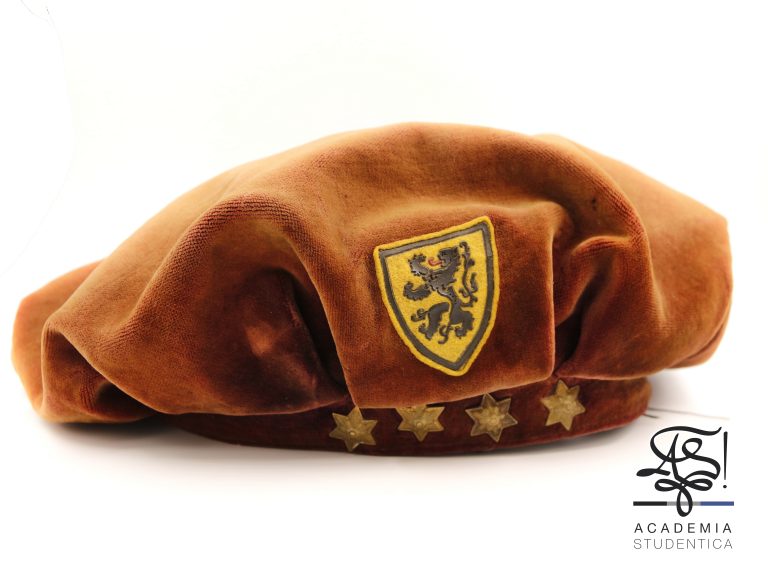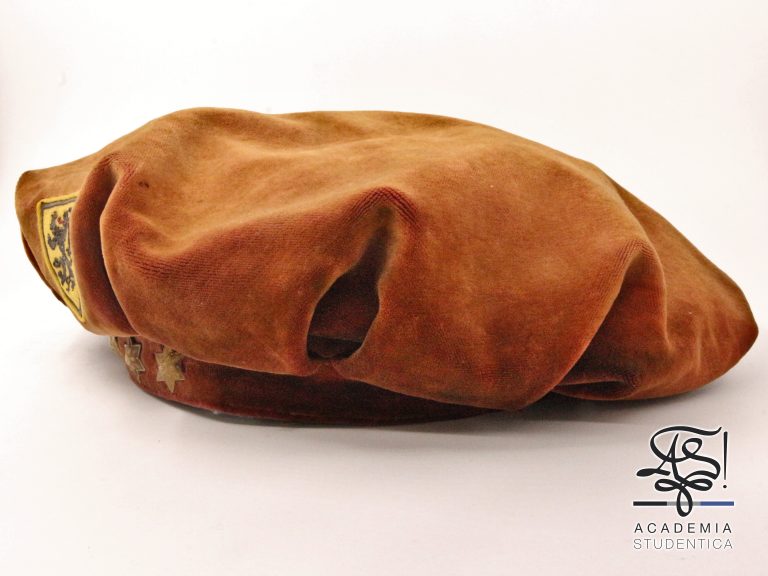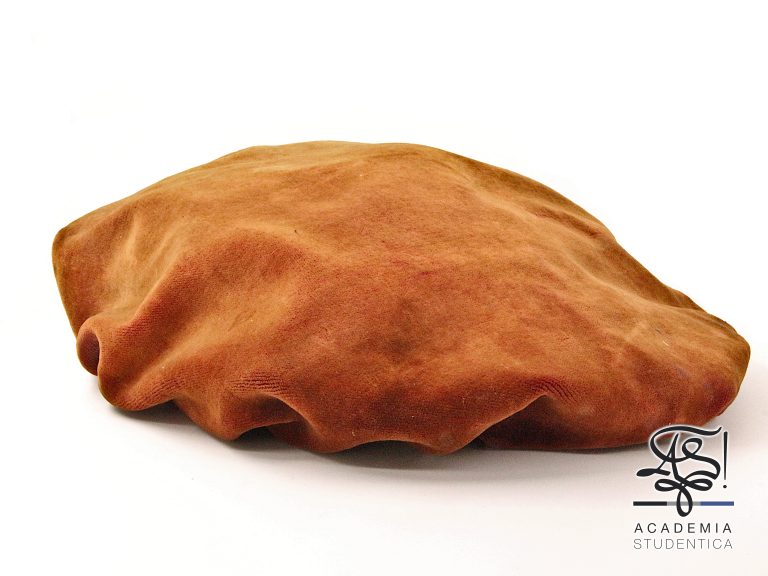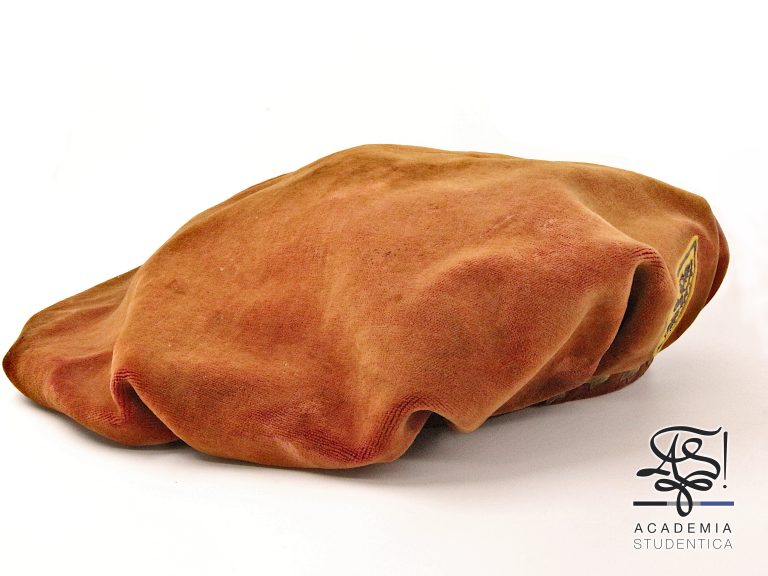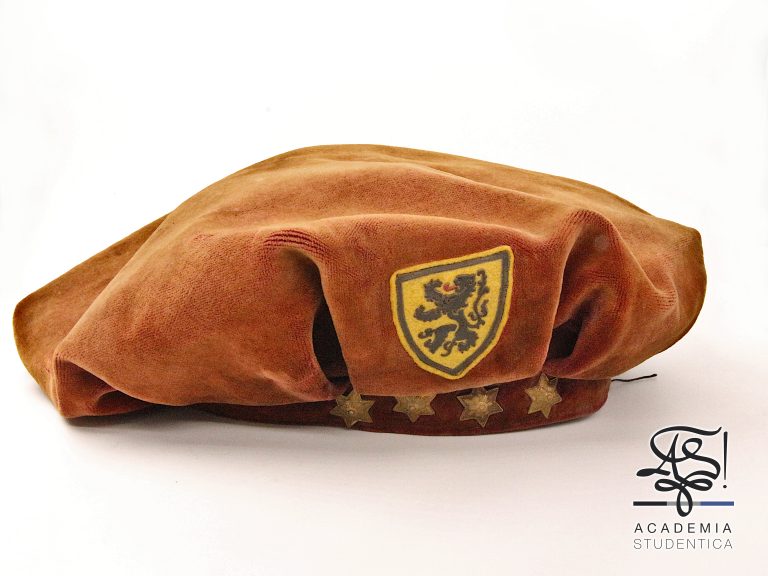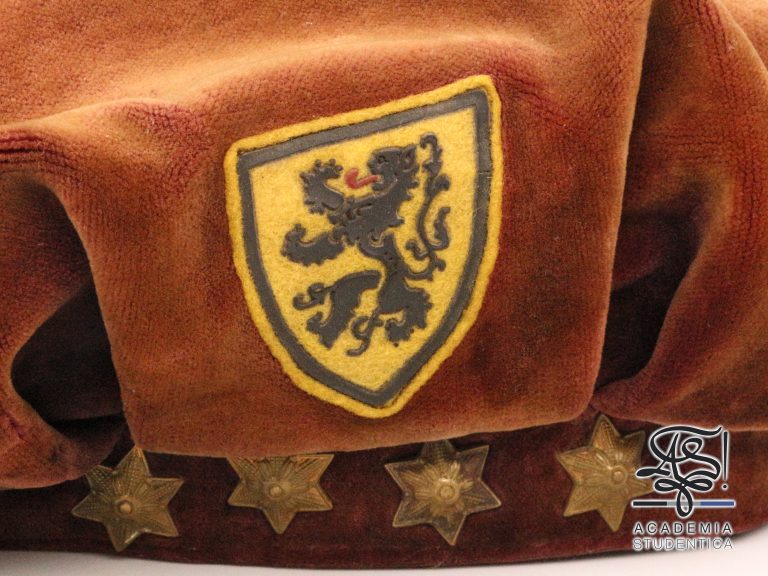Flat, Belgium, Ghent.
Coll.: Cap’n
After the First World War, everything German was removed from the public scene. The Guild cap worn since 1907 and imported directly from Germany was no exception.
The academic authorities announced the day after the reopening of the University of Leuven that German caps were banned. The Verbond replaced them with the “Flat”, which is a Dutch version of the French mockery flatte (cowpie).
This hat was based on the French “Faluche”, a large black drooping beret with a band at the bottom.
The Flemish students chose a burgundy beret, with a band in the colours of the faculty or association to which they belonged. Annual stars and a faculty symbol were often placed on the cap. A shield with the Flemish lion was also often placed on the crown.
In 1932 the golden years of Jef Vanden Eynde returned and the so-called Verbondspet was introduced. This cap was very similar to the cap that was common until 1914 and replaced the Flat.
After the Second World War, the Flat was reintroduced among the students in Ghent for a while. Since 1987, the Brussels club Bruxellas has been wearing burgundy Flats.
Flat, Belgique, Gand.
Coll. : Cap’n
Après la première guerre mondiale, tout ce qui était allemand a été retiré de la scène publique. La casquette de la Guilde portée depuis 1907 et importée directement d’Allemagne n’a pas fait exception.
Les autorités académiques ont annoncé le lendemain de la réouverture de l’université de Louvain que les casquettes allemandes étaient interdites. Le Verbond les a remplacés par le “Flat”, qui est une version néerlandaise de la moquerie française flatte (bouse de vache).
Ce couvre-chef était basé sur la “Faluche” française, un grand béret noir tombant avec une bande en bas.
Les étudiants flamands ont choisi un béret bordeaux, avec une bande aux couleurs de la faculté ou de l’association à laquelle ils appartiennent. Des étoiles d’année et un symbole de la faculté étaient souvent placés sur la casquette. Un blason avec le lion flamand était également souvent placé sur la couronne.
En 1932, l’âge d’or de Jef Vanden Eynde est revenu et le “Verbondspet” a été introduit. Cette casquette ressemblait beaucoup à la casquette qui était courante jusqu’en 1914 et a remplacé le Flat.
Après la Seconde Guerre mondiale, le Flat a été réintroduit parmi les étudiants de Gand pendant un certain temps. Depuis 1987, le club bruxellois Bruxellas porte des flats bordeaux.
Flat, België, Gent.
Coll.: Cap’n
Na de Eerste Wereldoorlog werd al wat Duits was geschrapt uit het straatbeeld. De Gildepet die sindss 1907 gedragen werd en rechtstreeks uit Duitsland geïmporteerd werd, was hier geen uitzondering op.
De academische overheid verkondigde daags na de heropening van de Leuvense universiteit dat de Duitse petten verboden werden. Het Verbond verving ze door de “Flat”, wat een vernederlandsing is van de Franse schimpnaam flatte (koeienvlaai).
Dit hoofddeksel was gebaseerd op de Franse “Faluche”, een grote zwarte afhangende baret met een band aan de onderzijde.
De Vlaamse studenten kozen voor een bordeaux-rode baret, met een band in de kleuren van de faculteit of vereniging waartoe men behoorde. Op de pet werden vaak jaarsterren en een faculteitssymbool aangebracht. Op de kruin werd vaak ook een schildje met de Vlaamse leeuw aangebracht.
In 1932 werd teruggegrepen naar de gouden jaren van Jef Vanden Eynde, en werd de zogeheten Verbondspet ingevoerd. Deze pet geleek sterk op de pet die tot 1914 gangbaar was, en verving de Flat.
Na de Tweede Wereldoorlog werd bij de Gentse studenten een tijd lang de flat opnieuw ingevoerd. Sinds 1987 draagt de Brusselse club Bruxellas bordeauxrode flatten.
